Seeing blood clots during your period is not a cause for concern and is experienced by most women around the world. Menstrual blood clots develop when the uterus sheds an increased amount of blood which coagulates in your vagina before coming out of the body. While blood clots during menstruation are not harmful, if you experience heavy bleeding for more than seven days, consult a doctor immediately. In this article, we take a look at some of the natural remedies available for the treatment of blood clots during your periods.
In This Article
In This Article
- What Is A Menstrual Blood Clot?
- Types Of Blood Clots
- What Causes Blood Clots During Periods?
- Side Effects Of Menstrual Clotting
- Home Remedies To Treat Blood Clots During Periods
- Prevention Tips
What Is A Menstrual Blood Clot?
Menstrual blood clots are globs of coagulated blood that have a gel-like appearance. These globs can also be tissues and by-products of blood that are expelled from the uterus during the menstrual cycle.
Small and less frequent blood clots are a common occurrence, and you don’t need to worry about them. However, if you are regularly passing large clots during your period, it could be an indication of an underlying medical condition.
Blood clots are often classified as normal or abnormal, depending on their appearance. Let’s look at the types in detail
Types Of Blood Clots
Normal blood clots are usually:
- Smaller (not larger than a quarter)
- Occasional (usually occur at the beginning of your menstrual cycle)
- Bright or dark in color
On the other hand, abnormal blood clots are:
- Larger than a quarter
- Occur frequently
So, what causes these clots in the first place? Let’s find out.
What Causes Blood Clots During Periods?
The menstrual cycle of a fertile woman repeats every 28 to 35 days, lasting for about 4 to 8 days. It causes the shedding of the uterine lining (also called the endometrium).
The endometrium, which thickens and grows in response to the hormone estrogen, supports a fertile egg upon conception. However, if a woman does not conceive during this period, this lining sheds off. This whole process is called menstruation. This shedding causes blood clots during menstruation.
When the lining is shed, it may get mixed with
- Blood
- Blood by-products
- Mucus
- Tissue
The endometrium usually pools in the bottom of the uterus and waits for the cervix to contract to be expelled. To help with the breakdown of this lining, your body produces anticoagulants. When the blood flow surpasses the amount of anticoagulants produced, it results in blood clots.
Medical conditions responsible for heavy blood flow during your periods are:
- Uterine obstructions that enlarge the uterus
- Fibroids, which are noncancerous muscular tumors that grow in the uterine wall
- Endometriosis, a condition in which the uterine lining grows outside the uterus and into your reproductive tract
- Adenomyosis, which occurs when the uterine lining grows into the uterine wall
- Cancerous tumors
- Hormonal imbalances
Menstrual clotting can also be accompanied by the following side effects.
Side Effects Of Menstrual Clotting
- Anemia due to abnormally heavy blood flow
- Severe pain or period cramps
We strongly recommended you visit a doctor if your menstrual blood clots are more frequent. This is to rule out potential complications.
However, if they are occasional and you are not experiencing the above side effects, you can try these home remedies that can help in easing menstrual blood clots.
Home Remedies To Treat Blood Clots During Periods
- Red Raspberry Leaf
- Massage
- Cold Compress
- Vitamins
- Cayenne Pepper
- Blackstrap Molasses
- Ginger Tea
- Chamomile Tea
- Garlic
- Pumpkin Seeds
How To Get Rid Of Menstrual Blood Clots Naturally
1. Red Raspberry Leaf Tea
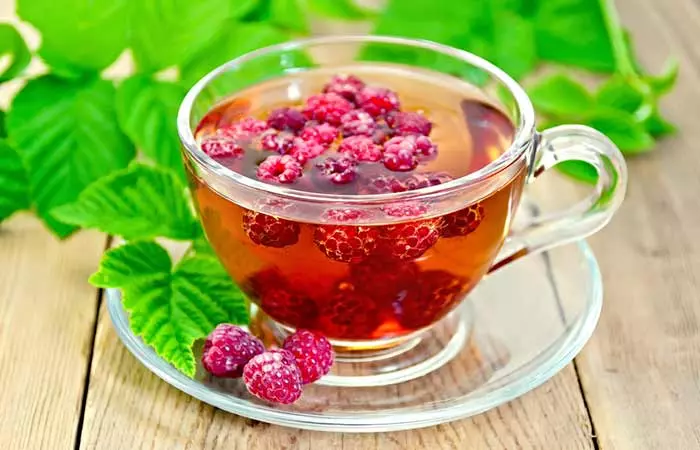
Shutterstock
You Will Need
- 1 teaspoon of red raspberry tea
- 1 cup of water
- Honey
What You Have To Do
- Add a teaspoon of red raspberry tea to a cup of water.
- Bring it to a boil in a saucepan and simmer for 5 minutes.
- Strain and allow the tea to cool a bit.
- Add some honey to it and consume.
How Often You Should Do This
You must drink this 2 to 3 times daily.
Why This Works
Red raspberry leaves contain fragarine, an alkaloid that helps tone your uterus and balance your hormones (1).
2. Massage

Shutterstock
Various massaging techniques help improve reproductive system health and enhance blood circulation around the uterus. They can also ease away the menstrual blood clots as they improve blood flow (2).
3. Cold Compress

Shutterstock
You Will Need
An ice pack
What You Have To Do
- Apply a cold pack to your lower abdomen.
- Leave it on for 1 to 2 minutes and remove.
- Repeat thrice, preferably after every 5 minutes.
How Often You Should Do This
You must do this whenever you observe blood clotting during your period or right before you are due.
Why This Works
Cold compresses help constrict the blood vessels and have a numbing effect, which can ease the blood clots (3).
4. Vitamins

Shutterstock
Vitamins A, B, D, and C help relieve heavy menstrual bleeding or clotting.
Vitamin A ensures proper replication of red blood cells, and its antioxidant properties protect cells from damage.
Subscribe
B vitamins, especially vitamin B6, are necessary for producing prostaglandins that help reduce blood clots.
Vitamin D balances hormones to alleviate excess bleeding.
And lastly, vitamin C can help strengthen your fragile cells and blood vessels, thereby easing blood clots (4).
5. Cayenne Pepper
Shutterstock
You Will Need
- ½ teaspoon of powdered cayenne pepper
- 1 glass of warm water
- Honey
What You Have To Do
- Add half a teaspoon of cayenne powder to a glass of warm water.
- Mix well and add some honey to it.
- Consume this mixture.
How Often You Should Do This
You must drink this twice daily.
Why This Works
Cayenne pepper enhances blood flow, which is why it is used to treat various bleeding-related problems (like hemorrhage). Regular consumption of cayenne pepper can relieve excessive blood clots as well (5).
6. Blackstrap Molasses
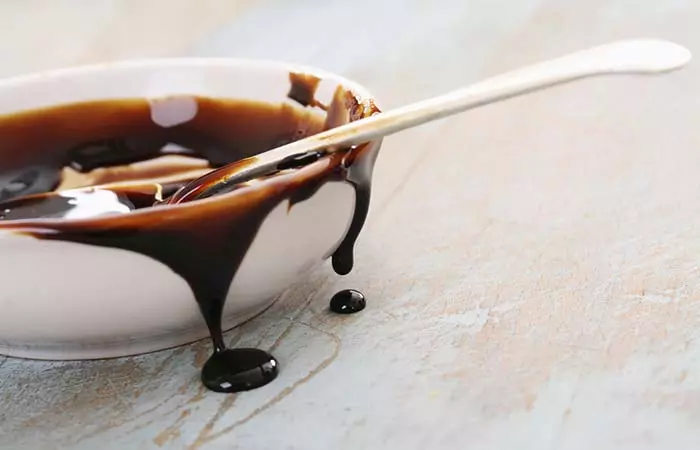
Shutterstock
You Will Need
- 1-2 teaspoons of blackstrap molasses
- 1 cup of warm water or milk
What You Have To Do
- Add one to two teaspoons of blackstrap molasses to a cup of water or milk.
- Mix well and drink it.
How Often You Should Do This
You must drink this once daily during your period or right before it begins.
Why This Works
The iron in blackstrap molasses encourages the production of red blood cells, thereby replacing the excess blood lost during menstruation. It also soothes your uterine muscles and walls, alleviating pain and blood clots.
7. Ginger Tea
Shutterstock
You Will Need
- 1 teaspoon of minced ginger
- 1 cup of water
- Honey
What You Have To Do
- Add a teaspoon of minced ginger to a cup of water.
- Bring it to a boil in a saucepan and simmer for 5 minutes.
- Strain and allow the tea to cool for a while.
- Add a little honey to it and consume immediately.
How Often You Should Do This
Drink this twice daily for optimum benefits.
Why This Works
Regular ginger intake can reduce heavy blood flow and clots during menstruation, as per a study published in Phytotherapy Research (6).
8. Chamomile Tea

Shutterstock
You Will Need
- 1 teaspoon of chamomile tea
- 1 cup of water
- Honey
What You Have To Do
- Add a teaspoon of chamomile tea to a cup of water.
- Bring it to a boil in a saucepan.
- Strain and allow the tea to cool.
- Add some honey to it and drink immediately.
How Often You Should Do This
You must drink chamomile tea on a daily basis.
Why This Works
The coumarin in chamomile tea helps in blood thinning, which helps in reducing blood clots. And the tea’s anti-inflammatory properties help you deal with menstrual cramps and pain (7).
9. Garlic
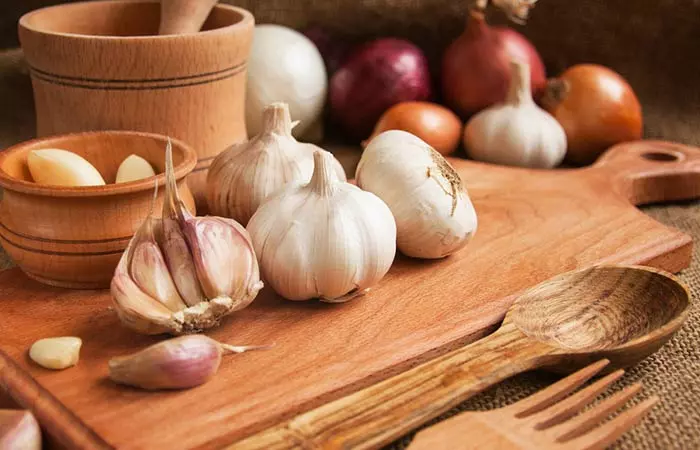
Shutterstock
You Will Need
Minced garlic
What You Have To Do
- Add minced garlic to your dishes.
- You can also chew on a garlic clove as an alternative.
How Often You Should Do This
You must do this daily, especially when you are on your period.
Why This Works
Sulfur, an important compound in garlic, exhibits anticoagulant activity against clotting disorders like thrombosis (8). Hence, garlic can help to get rid of menstrual blood clots.
10. Pumpkin Seeds

Shutterstock
You Will Need
2 tablespoons of roasted pumpkin seeds
What You Have To Do
- Take two tablespoons of roasted pumpkin seeds.
- Break their shells and consume them directly.
How Often You Should Do This
Consume pumpkin seeds daily.
Why This Works
Pumpkin seeds contain phytosterols as well as omega-3 polyunsaturated fatty acids (which get converted to prostaglandins) that can help ease blood clots during menstruation (9), (10).
Prevention is always better than cure, especially when it comes to your health. In addition to the home remedies, you can also follow these prevention tips to deal with blood clots during menstruation.
Prevention Tips
- Avoid consuming foods that contain vitamin K.
- Consume fruits rich in vitamin C.
- Drink lots of water and keep yourself hydrated.
- Exercise regularly.
Blood clots during periods can have many causes. These include fibroids, endometriosis, and hormonal imbalances. Certain home remedies can help manage blood clots during periods. Using red raspberry leaf, pumpkin seeds, chamomile tea, cold compress, vitamins, blackstrap molasses, cayenne pepper, ginger tea, and pumpkin seeds can minimize blood clots. In addition, you can possibly prevent blood clots by consuming foods rich in vitamin C, hydrating adequately, and exercising regularly. Also, limiting foods rich in vitamin K is recommended.
Frequently Asked Questions
How long do you bleed on your period?
Bleeding during periods may last anywhere between 2 to 7 days. Bleeding that continues for longer may need medical attention.
Is it normal to have a blood clot when you are on your period?
It is completely normal to notice blood clumps or clots during your periods. But if these clots are accompanied by heavy blood flow and last for more than one normal period, it could be an indication of an underlying medical issue.
Are blood clots a sign of miscarriage?
If you are pregnant, rapid bleeding and cramping, accompanied by contractions, can lead to the removal of large blood clots and tissues from your uterus. This is most often a sign of a miscarriage.
What does the color of your period blood tell you?
While bright red blood hints at the beginning of your cycle, dark red blood occurs towards the end and is an indication of the end of your period. Brown or black blood is usually present at the very end of your period and has been around for longer whereas light brown blood usually surfaces at the very beginning of your period, right before you notice the bright red spotting.
When to see a doctor?
You must visit your doctor immediately if:
- Your pad or tampon is soaked in blood in an hour for several hours
- You experience irregular bleeding
- You experience vaginal bleeding after menopause
Related
The following two tabs change content below.
- Author
- Reviewer
Shaheen Naser
Shaheen holds a postgraduate degree in Human Genetics and Molecular Biology. She is a Geneticist with proficiency in Biotechnology, Immunology,… more
Dr. Katie Corazzo
(ND)Katie Corazzo is a naturopathic doctor practicing family medicine. Women, men, and their children looking for integrative health care can… more



 10 Effective Home Remedies To Stop Peeling Of The Fingertips
10 Effective Home Remedies To Stop Peeling Of The Fingertips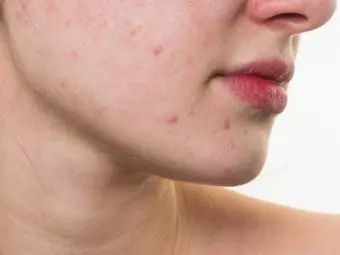 6 Natural Ways To Treat Red Spots On Skin And Prevention Tips
6 Natural Ways To Treat Red Spots On Skin And Prevention Tips How To Get Rid Of Heat Bumps On The Legs – 10 Natural Ways
How To Get Rid Of Heat Bumps On The Legs – 10 Natural Ways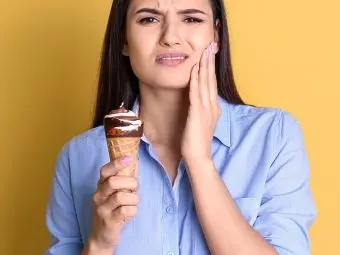 How To Get Rid Of Cavities – 7 Home Remedies To Follow
How To Get Rid Of Cavities – 7 Home Remedies To Follow How To Get Rid Of A Hickey – 13 Simple And Effective Ways
How To Get Rid Of A Hickey – 13 Simple And Effective Ways 10 Home Remedies To Heal Adenomyosis + Causes And Diet
10 Home Remedies To Heal Adenomyosis + Causes And Diet 12 Ways To Naturally Gain Weight At Home
12 Ways To Naturally Gain Weight At Home How To Make Your Own Hand Sanitizer At Home & Tips To Use It
How To Make Your Own Hand Sanitizer At Home & Tips To Use It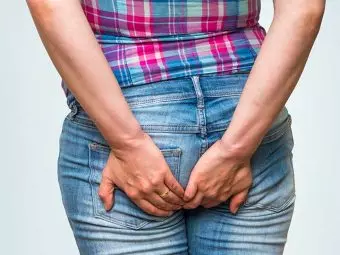 Anal Fissures: Treatment, Home Remedies, And Prevention Tips
Anal Fissures: Treatment, Home Remedies, And Prevention Tips